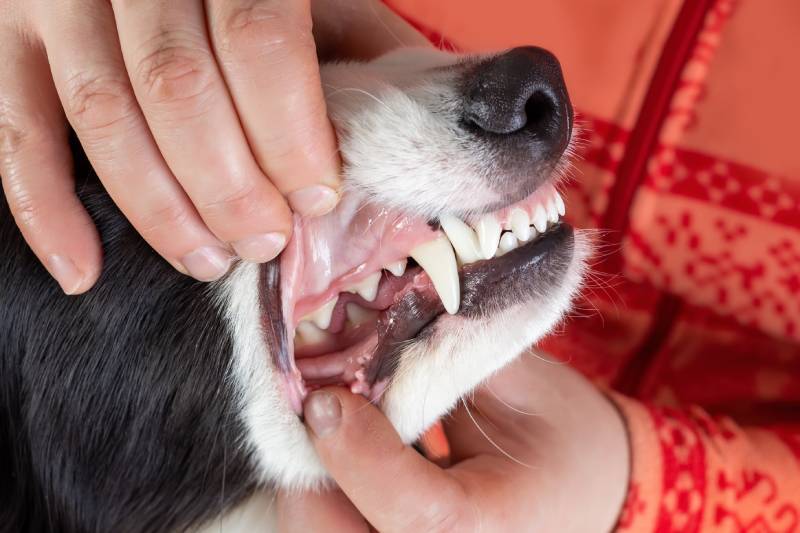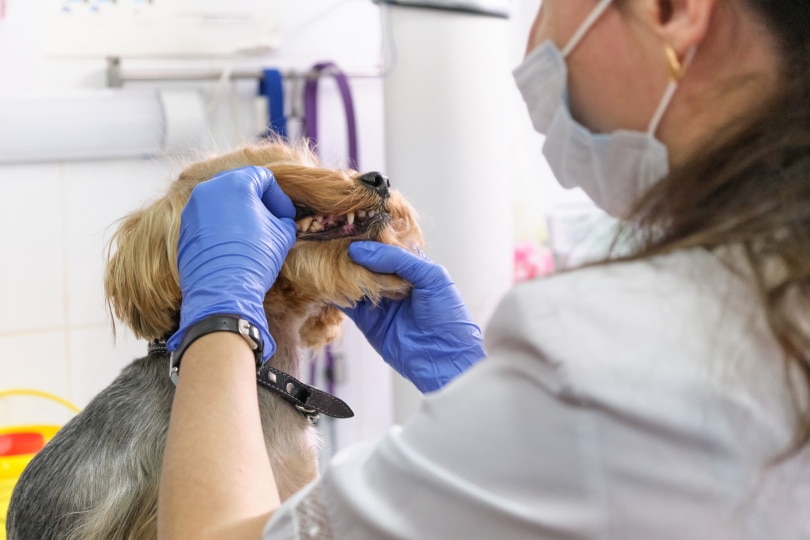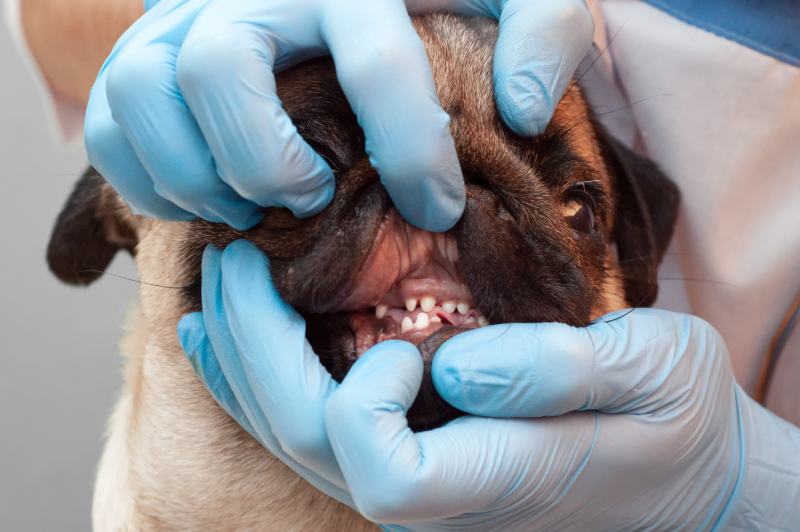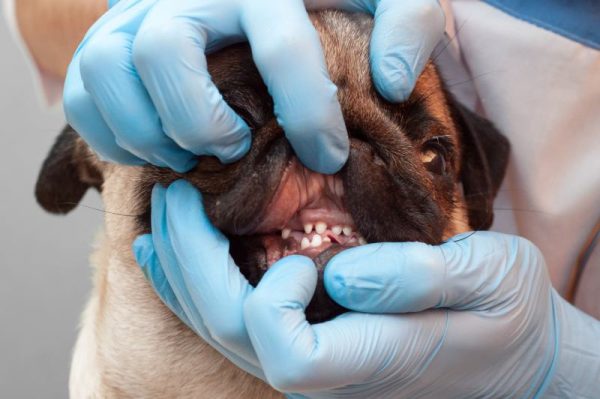Click to Skip Ahead
Broken dog teeth are fairly common, and they most often occur because of accidents or from chewing on hard objects. In most cases, a broken tooth can be dealt with by scheduling an appointment with your vet, but there are some instances where you will need to get emergency treatment.
If your dog is in pain or if the tooth or gum is bleeding, it should be treated as an emergency. Similarly, if there are any signs of infection, it is an emergency. And if the pulp is visible, you should contact the emergency vets straight away. If you want to be sure of saving the tooth, swift action is best, and you shouldn’t wait until you can get an appointment with your regular vet.
Common Causes of Broken Teeth
The cause of broken teeth won’t necessarily help determine whether an emergency dental appointment is needed, but it can help prevent further breaks and your vet will want to know how the damage happened. The most common causes of broken teeth are:
- Trauma – Teeth can get broken in dog fights or accidents involving cars or other vehicles. A broken tooth may even be caused by a fight with a wild animal. Falls and abuse may also be the cause of a missing or broken tooth. It’s even possible that a dog can get its tooth caught in a collar or other item and then knock part of it off.
- Chewing Hard Items – Dogs love bones, but they are hard and very difficult to chew. An eager dog can easily chip or break its tooth on a bone, especially if the dog is left with the bone for too long. Other hard plastic chew toys and antlers can also crack a dog’s teeth. Softer chew toys and treats minimize the risk of dental damage and still provide your dog with an enjoyable treat. A general rule of thumb is that chew toys should be soft enough to indent with your fingernail.
- Inappropriate Chewing – Not all dog chewing is sanctioned. Some dogs are prone to chewing just about anything they can lay their paws on, and this is especially common in dogs with anxiety or younger dogs.
- Dental Disease – Dental disease can make teeth weaker and easier to damage. Ensure you brush your dog’s teeth at least three times a week and keep up with regular vet visits because they will monitor your dog’s dental health.

Signs and Symptoms
The most common teeth for a dog to break are the maxillary fourth premolars ( the upper large cheek teeth) and the canines. If the canines are broken it’s usually more obvious, whereas fractured teeth further back may be harder to notice. You can look for signs of bleeding as well as swelling around the damaged tooth. Other signs to look for include your dog being unwilling to eat—chewing could be painful if there is any infection or damage to the gums. Your dog may also scratch or paw at their mouth if they are uncomfortable.
When the enamel is chipped, the underlying dentine is exposed which makes the tooth sensitive to pressure as well as heat and cold. It is more serious when the pulp cavity is exposed. This is where the nerves and blood vessels that supply the tooth are located and it can easily become infected.

Treatment
Generally speaking, dogs with broken teeth will be fine, as long as they do get the appropriate veterinary treatment. Depending on the type and severity of the damage, the vet might try and seal a cracked or chipped tooth. If the pulp cavity is exposed then a root canal may be required with or without a crown. Extraction of the broken tooth is sometimes the only option. In some cases, your vet may suggest referring your dog to a specialist veterinary dentist.
Is It an Emergency?
In many cases, a broken dog tooth is not an emergency but it does need to be assessed by a vet as soon as possible. In more severe cases, or where there is an infection, an emergency appointment might be the best solution. Timely intervention reduces the likelihood of the tooth having to be removed and it can help alleviate any pain more quickly. If you’re in any doubt, call the vet and give them details. They will be able to advise on what your next action should be and whether you need an emergency appointment or can schedule an appointment.

How to Prevent Broken Teeth
You can’t prevent every instance of broken teeth but there are some things you can do to reduce the risk. Rather than giving bones or antlers, give softer chew toys or treats to reduce the likelihood of chipping or breaking teeth that way. If your dog chews furniture or other items while you’re out, you can consider using a crate, giving a stuffed kong or having behavioral training to reduce the symptoms of separation anxiety and prevent unwanted chewing.
Conclusion
Broken teeth can cause discomfort and may be painful. The tooth and surrounding area can also become infected, and if any of the tooth pulp is showing, this too can become infected. If the tooth is chipped and there is no visible pulp, blood, or infection, an emergency appointment may not be necessary. However, you should still see your vet as soon as possible and contact them for advice if you are unsure if it needs a more urgent assessment.
Featured Image Credit: Yekatseryna Netuk, Shutterstock










